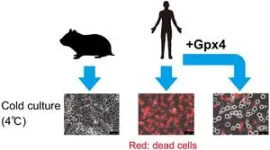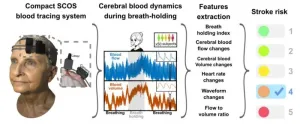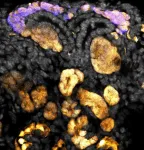(Press-News.org) A gene that limits cellular damage could be the key to surviving prolonged cold exposure.
Researchers have identified a gene that enables mammalian cells to survive for long periods at extremely low temperature, which animals experience during hibernation.
Body temperatures below 10 degrees Celsius (°C) swiftly prove fatal for humans and many other mammals, because prolonged cold stress causes cells to accumulate damaging free radicals—in particular lipid peroxide radicals—resulting in cell death and organ failure. But a few mammalian species can survive cold stress by hibernating. Hibernation in many small mammals involves cycles of days to weeks of deep torpor in which animals stop moving and their body temperature drops to extremely low levels, interspersed with short periods of normal body temperature and activity.
Now, a study led by Assistant Professor Masamitsu Sone and Professor Yoshifumi Yamaguchi of the University of Hokkaido, Japan, has identified a key gene that helps hibernating Syrian hamsters (golden hamsters, Mesocricetus auratus) to avoid cold-induced cell death. The findings were published in the journal Cell Death and Disease.
To identify the gene, the researchers first engineered cold-sensitive human cancer cells to carry genes from cold-resistant hamster cells, and then they exposed the human cells to the repetition of prolonged cold conditions and rewarming from the cold. By analyzing the genomes of the human cells that survived this cold exposure and rewarming stresses, the team could identify the hamster genes that had been incorporated into the human cells’ genome and enabled them to survive the cold.
This analysis revealed a likely candidate: the gene coding for glutathione peroxidase 4 (Gpx4), one of a family of proteins already known to reduce the impact of reactive oxygen species in mammalian cells. When the activity of this gene was suppressed in hamster cells, either by engineering a knock-out version or by chemically suppressing its activity, the cells could only survive shorter periods of exposure to extreme cold—two days, instead of five—before they died due to the build-up of lipid peroxide.
Gpx4 is expressed in human and hamster cells, but only hamsters can hibernate, so the research team examined whether human Gpx4 and hamster Gpx4 behave differently. Interestingly, they found that even the human Gpx4 can provide cold protection when overexpressed in human cells.
“It’s still an open question why non-hibernator cells are much more vulnerable to cold stress than hibernator cells even though the expression levels of Gpx4 protein are comparable,” says Sone.
These findings are a first step towards finally understanding the mystery of how some mammals are able to safely hibernate through extreme cold. The discovery could have potential applications for human health, such as improving the long-term preservation of organs for transplantation using low temperatures, or in the use of hypothermia as a therapeutic tool.
END
Syrian hamsters reveal genetic secret to hibernation
2024-10-01
ELSE PRESS RELEASES FROM THIS DATE:
Tracking microplastics: FAMU-FSU College of Engineering researcher helps discover how microplastics move for better storm water management
2024-10-01
Microplastic pollution is a significant environmental problem that harms animals and people and affects ecosystems worldwide. These tiny pieces of plastic, smaller than five millimeters, are pushed by wind and water to move around the globe.
Nasrin Alamdari, an assistant professor in the FAMU-FSU College of Engineering’s Department of Civil and Environmental Engineering, is on a mission to learn more about microplastics and how they move.
In research published in Environmental Pollution, she helped examine how shape, size and density affect the speed at which ...
The Lancet Psychiatry: Conversion practice linked to greater risk of mental health symptoms, surveys of LGBTQ+ people in the USA suggest
2024-09-30
Analysis of questionnaires completed by 4,426 LGBTQ+ people in the USA suggests undergoing conversion practice targeting gender identity or sexual orientation is linked with symptoms of depression, PTSD and suicidal thoughts or attempts.
Cisgender and transgender participants also had more severe symptoms of depression and PTSD if they had undergone conversion practice.
Cisgender participants subjected to both types of conversion practice had a greater risk of suicidal thoughts and attempts than transgender participants – but mental health symptoms were more severe for transgender people overall, ...
Most accurate ultrasound test could detect 96% of women with ovarian cancer
2024-09-30
An ultrasound test that detected 96% of ovarian cancers in postmenopausal women should replace current standard of care test in the UK according to a new study.
In a paper published in Lancet Oncology today (Monday 30 September), research funded by the National Institute for Health and Care Research (NIHR) and led by Professor Sudha Sundar from the University of Birmingham compared all currently available tests to diagnose ovarian cancer in postmenopausal women head-to-head in a high-quality diagnostic test accuracy study.
Of the six diagnostic tests investigated, ...
Sylvester study: MRI provides early warning system for glioblastoma growth
2024-09-30
MIAMI, FLORIDA (EMBARGOED UNTIL SEPT. 30, 2024, AT 5:40 P.M. EDT) – A new study shows the potential power of imaging paired with radiation to shape treatment for glioblastoma patients in real time.
The study, led by researchers at Sylvester Comprehensive Cancer Center, part of the University of Miami Miller School of Medicine, is the first to quantify tumor changes in glioblastoma patients receiving MRI-guided radiation therapy. This novel technique, also known as MRI-linear accelerator or MRI-linac, pairs ...
Making soybeans smarter
2024-09-30
Ron Mittler is on a quest to create a smarter soybean. For years, mid-Missouri has withstood unpredictable weather patterns, including drought, heat waves and flooding — conditions that are known to hamper agricultural yields and make it difficult for farmers to produce. While we can’t control the weather, Mittler and his team are working to harness soybean crops’ natural ability to adapt to unfavorable weather conditions while also increasing their yields.
Working with $2.4 million from ...
New wearable laser device monitors brain blood flow to gauge stroke risk
2024-09-30
WASHINGTON — Researchers have developed a laser-based device that can be placed on the head to non-invasively monitor changes in brain blood flow and volume. The new device could one day help save lives by offering a direct and simple way to assess stroke risk based on physiological markers rather than indirect markers like lifestyle factors.
Strokes occur when blood flow to the brain is blocked or reduced, causing debilitating brain cell damage. With about 15 million people worldwide affected by strokes each year, it is the second leading cause of death and ...
BU professor receives $29M NIH grant to study dementia risk factors, prevention, and treatment
2024-09-30
FOR IMMEDIATE RELEASE
Monday, September 30, 2024
Contact:
Jillian McKoy, jpmckoy@bu.edu
Michael Saunders, msaunder@bu.edu
##
BU Professor Receives $29M NIH Grant to Study Dementia Risk Factors, Prevention, and Treatment
The Triangulation of Innovative Methods to End Alzheimer’s Disease project will use large, diverse datasets to examine whether interventions targeting alcohol use, depression, vision or hearing impairments, or social isolation can protect people from Alzheimer’s disease and related dementias. This project is a collaboration among Dr. Maria Glymour at Boston University School of Public Health, Dr. Jacqueline ...
Ninth Circuit reverses lower court, reinforces FDA's authority to regulate unproven stem cell products
2024-09-30
In an important step to protect the public from unproven stem cell products, the U.S. Court of Appeals for the Ninth Circuit ruled in favor of the U.S. Food and Drug Administration in U.S. v. California Stem Cell Treatment Center, Inc., reversing the district court. The reversal fortifies FDA’s tiered, risk-based framework for the regulation of cell therapies and is consistent with a similar ruling in the Eleventh Circuit in 2021.
The appellees urged the Ninth Circuit to uphold the lower court’s ...
Wnt happens in kidney development?
2024-09-30
A group of essential signaling molecules known as the Wnt pathway emerged early in the evolution of multicellular life. Scientists have been studying Wnt actions for four decades to comprehend its complex roles in development and disease. In development of the mammalian kidney, USC Stem Cell scientists from Andy McMahon’s lab undertook a pair of complementary studies, published today in the journal Development, that provide new insight into the critical role of Wnt signaling in initiating the development of the mammalian kidney.
“Many stem and progenitor cells require Wnt signaling, ...
Where flood policy helps most — and where it could do more
2024-09-30
Flooding, including the devastation caused recently by Hurricane Helene, is responsible for $5 billion in annual damages in the U.S. That’s more than any other type of weather-related extreme event.
To address the problem, the federal government instituted a program in 1990 that helps reduce flood insurance costs in communities enacting measures to better handle flooding. If, say, a town preserves open space as a buffer against coastal flooding, or develops better stormwater management, area policy owners get discounts on their ...






